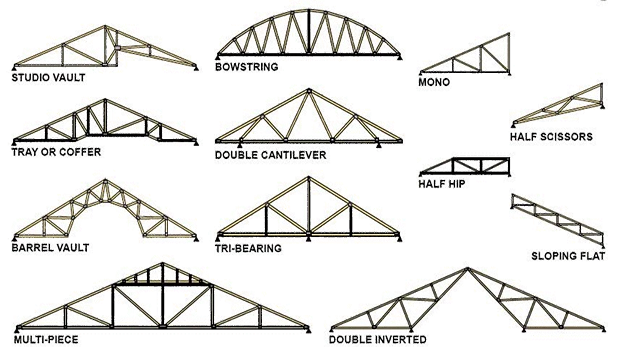In engineering, a truss is a structure containing one or more triangular units formed with straight members whose ends are connected at joints which are addressed to as nodes. External forces and reactions to those forces are judged to operate only at the nodes and result in forces in the members which are either tensile or compressive forces.
raits Of Truss:

Simple truss
This is the simplest form of a truss which consists of just one single triangle. In a framed roof containing rafters and a ceiling joist this type of truss is used generally. It is also used in other mechanical structures like bicycles and aircraft.

Planar truss
This kind of truss is formed on the basis of a single plane. Planar trusses are usually applied in parallel to build roofs and bridges.

Space frame truss
The ideal example of space frame truss is large free-standing power line pylons which contains a 3D (three-dimensional) framework composed from tetrahedron shape.
Types of Truss:
There are basically two types of trusses:
- The Common Truss, also referred as pitched truss, is defined by its triangular shape. It is every now and then used for roof construction.
- The Flat truss (Parallel chord truss) usually derived from its top and bottom chords. This kind of truss is used for floor construction.
Apart from the aforesaid trusses there are many more trusses available in structural engineering such as:
- Warren truss
- Pratt truss
- Bowstring truss
- King post truss
- Lenticular truss
- Town’s lattice truss
- Vierendeel truss

